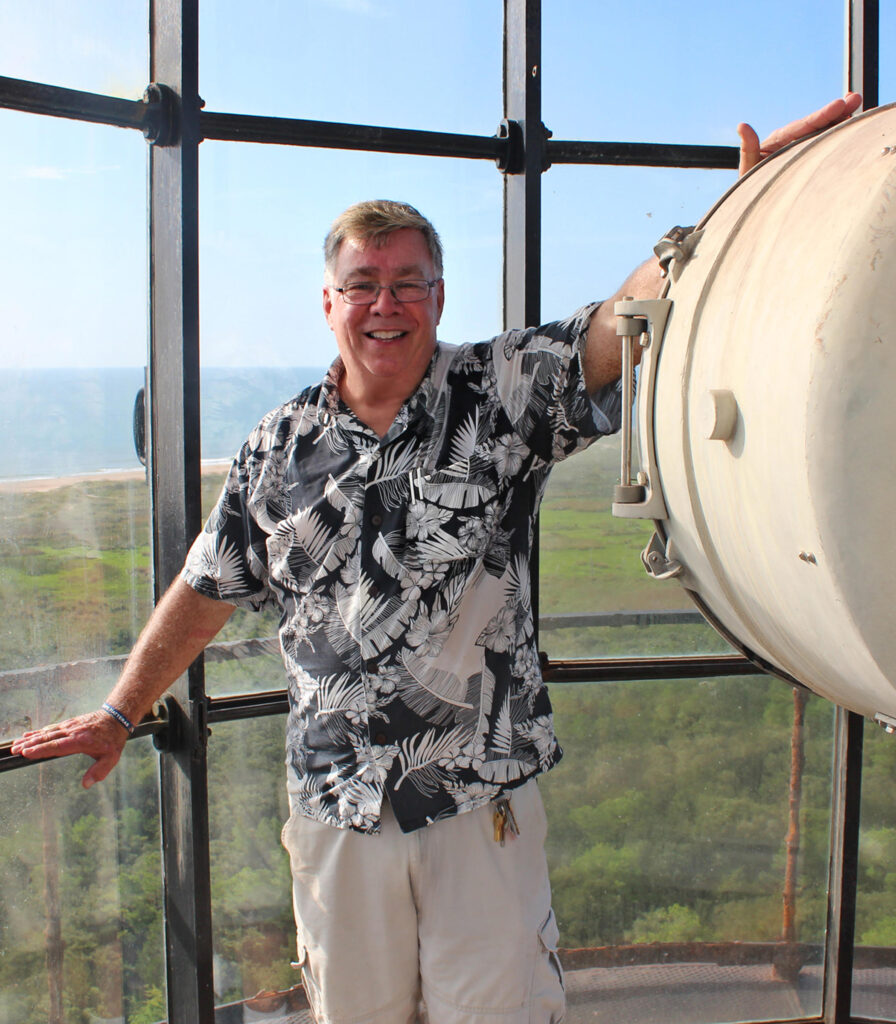

Cape Hatteras Lighthouse on North Carolina’s Outer Banks is one of the most visited lighthouses in the world. Offshore from Cape Hatteras is a dangerous twelve-mile long sandbar called Diamond Shoals. Countless shipwrecks there led to the nickname “Graveyard of the Atlantic.” A lighthouse was first authorized at Cape Hatteras in 1794, and the station began service in 1803. The lighthouse that stands today began service on December 16, 1870. It got its famous black and white spiral daymark three years later, making it easier to tell apart from other area lighthouses. At 198 feet, it’s the tallest lighthouse in the United States and the second tallest brick lighthouse in the world.
Cape Hatteras Light Station was transferred to the National Park Service in 1937. The National Park Service continues to manage the lighthouse and keepers’ quarters, as well as conducting public tours. The Outer Banks Lighthouse Society also actively supports all North Carolina Lighthouses. A major restoration of Cape Hatteras Lighthouse will soon be underway.

There are two people in today’s interview. Alisa Hardin-Lapp is the supervisory park ranger for the Hatteras Island District, and John Havel is a board member of the Outer Banks Lighthouse Society who has done many years of research on the history of Cape Hatteras light station.
Podcast: Play in new window | Download (Duration: 58:32 — ) | Embed

Jeremy D’Entremont is the author of more than 20 books and hundreds of articles on lighthouses and maritime history. He is the president and historian for the American Lighthouse Foundation and founder of Friends of Portsmouth Harbor Lighthouses, and he has lectured and narrated cruises throughout the Northeast and in other regions. He is also the producer and host of the U.S. Lighthouse Society podcast, “Light Hearted.” He can be emailed at Jeremy@uslhs.org

